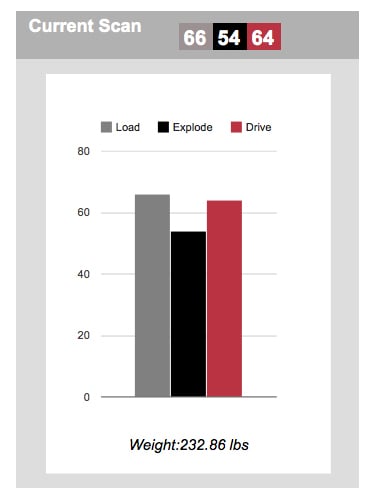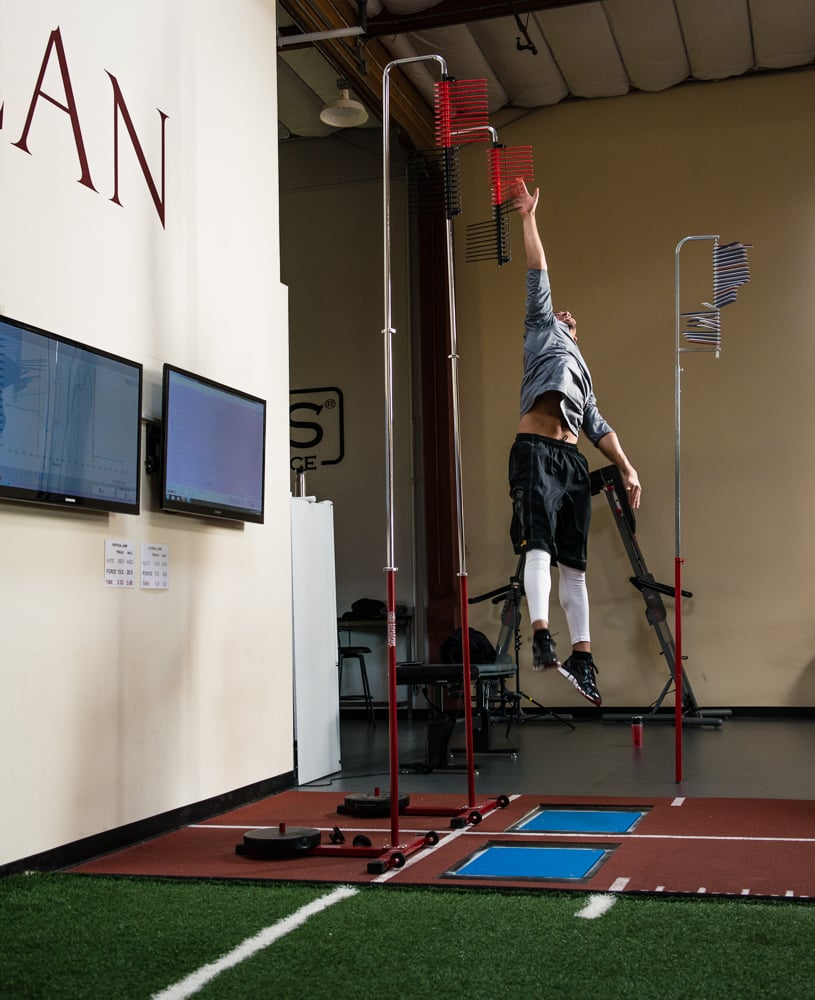
We frequently refer to the Sparta Signature that we want all of our rotational athletes (pitchers, quarterbacks, etc.) to train towards. We have come to identify this signature by it’s “U” shape (see graph to the right), but at it’s core it represents an athletes ability to LOAD effectively (generate lots of force), relax during the EXPLODE (transfer) phase of the movement, and then DRIVE well, finishing the movement before decelerating the force that was created during the DRIVE phase. When you break the movement signature into it’s components like that, it’s easy for an experienced coach to see how those force characteristics would be beneficial during a movement like throwing a pitch. But we didn’t arrive at this rotational Signature simply by imagining what the best force characteristics would be for those types of athletes. We used objective data, collected from professional athletes’ on-field performance to decide what variables were most important.
As coaches who rely heavily on objective data to assess and plan for athletic performance, one of our mantras is, “Make sure what you’re measuring matters”. Assessments are only useful if they can help improve on-field performance. Because we believe this, we continually call on the help of statisticians to help correlate Sparta Signature data derived from a vertical jump on a force plate with on-field performance. In statistics, this type of correlation is called canonical correlation. When you are trying to find correlations between sets of random variables canonical-correlation analysis will find linear combinations which have maximum correlation with each other.

To determine the best Signature for our professional pitchers we set out to correlate force plate variables from the vertical jump test with ground ball percentage. Ground ball percentage is used for its validity, as it best represents that individual’s ability, unlike other pitching metrics like ERA that rely on other factors such as the team’s defense. Ground ball percentage is just like it sounds, the percentage of batted balls that are hit on the ground.
For pitchers, having a high ground ball rate means not only limiting the home run potential, but it gives them the best chance of inducing an out. A pitcher who can induce ground balls well can also work out of trouble much easier, as grounders can lead to double plays. The most successful pitchers in baseball each season often have very high ground ball percentages. For batters, a high ground ball rate leaves very little room for extra base hits and home runs, and batters with an elevated GB% will often have a low batting average. (their ability to get outs).
The research included game statistics from over 100 professional pitchers over 2 seasons. Conducted by the statistics department at BYU, the analysis concluded that as LOAD and DRIVE increase, so does a pitchers ability to induce ground balls.
This type of statistical analysis gives us an even greater ability to gain our athletes’ trust and confidence in us as coaches. They know that when we prescribe a new movement it’s aimed at improving a specific skill or strength that will help them on the field. Our athletes see their Sparta Signature as a constant evolution of their athletic development, and that improving it is the same as improving a skill on the field or court.